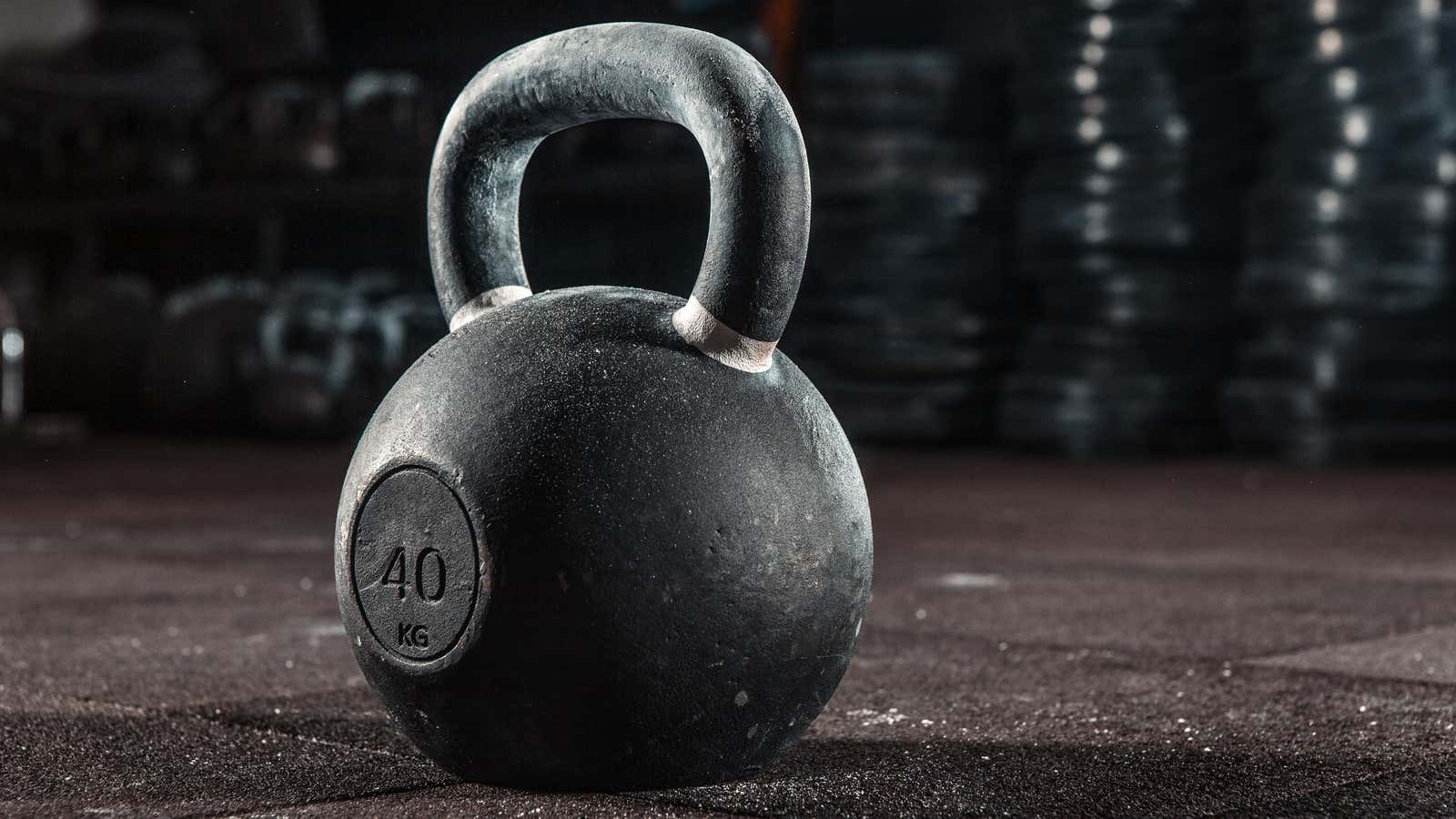How to Do Kettlebell Exercises Without Hurting Your Wrists

A bruised forearm or wrist is a common problem when you start with kettlebells, but it doesn’t have to be. People who can do jerk after jerk without pause are not just used to pain; they just learned to do this movement without hitting their wrists. So let’s talk about how you can learn the same methods they use.
Learn the correct hand position
First, let’s talk about the position the kettlebell is in when you hold it still. (We’ll talk in a minute about how to put it in the right position during the lift.)
Your first impulse might be to grab the center of the handle, with the round part of the kettlebell resting against the back of your forearm. But a more comfortable position is to hold it diagonally. The part of your hand where your palm meets your thumb should be at or near one of the corners of the kettlebell handle. If you think of a pen as a rectangular window, this curve should be in the top corner and your wrist or forearm in the opposite bottom corner.
Your wrist should be as straight as possible so that when you hold the kettlebell over your head, your arm and wrist form a solid vertical support that supports the weight of the kettlebell as it presses down on you from the handle.
Take a look at the two photos above. Both of these positions should be comfortable when you hold the bar stationary. It’s okay if they seem weird and out of the ordinary because you’re trying something new, but you shouldn’t feel any pressure or pressure. Your fingers should be relaxed enough that you can straighten them without losing support on the bell.
Don’t flip the bell over your hand
That is the position. The rest is technique. How to put the bell in such a comfortable position without hitting it on the wrist on the way there?
Here’s a big discovery: whether you’re doing a snatch or a clean, the bar should not flip over your arm . Beginners often worry about how to make the bell land softly, when the real winning move is to not let it land on you at all.
Let’s start with kettlebell snatches, because they often cause the most questions, and yet they are quite common in beginner workouts. Whether you’re into hardstyle, sportstyle, or whatever the hell the CrossFitters are into, the phases of the kettlebell snatch go something like this:
- Use your hips and legs to move the bell up, much like a seesaw.
- When the kettlebell is about chest level, pull your shoulder back so that the kettlebell moves towards you. Your elbow bends slightly to allow this. (It still has upward momentum, so it’s moving towards you, but also upward.)
- While the bell is floating in the air, slide your hand under it , inserting your hand into the position we studied in the previous section. This will be like hitting upwards, and in the process the bell will come to a very gentle stop, its handle in your hand, and its round part in contact with your forearm. Again, most of the weight is on the handle, with your hand serving as a support.
To get the hang of it, you can practice the first two steps in what is sometimes referred to as the “high snatch” pull. Chest raises work the same way, except that the second step is done at waist level and the kettlebell stops at shoulder height instead of overhead.
How to make it all happen in a split second? Well, practice will help. There are also many small technical tips that can help, such as keeping the bar close to the body, but these are best explained in video format. Check out this tutorial from Brittany van Schravendijk or this one (which includes tips on irregularly shaped kettlebells) from Joe Daniels , both of whom are high-level kettlebell athletes and coaches. I also love this lesson from trainers Jason and Lauren Pak , especially for its parallel examples of good and bad technique.
The bottom line is that painful forearms are not just part of kettlebell training, and with some practice and technique, you can get the kettlebell to gently find its place instead of hitting your wrist with every rep.